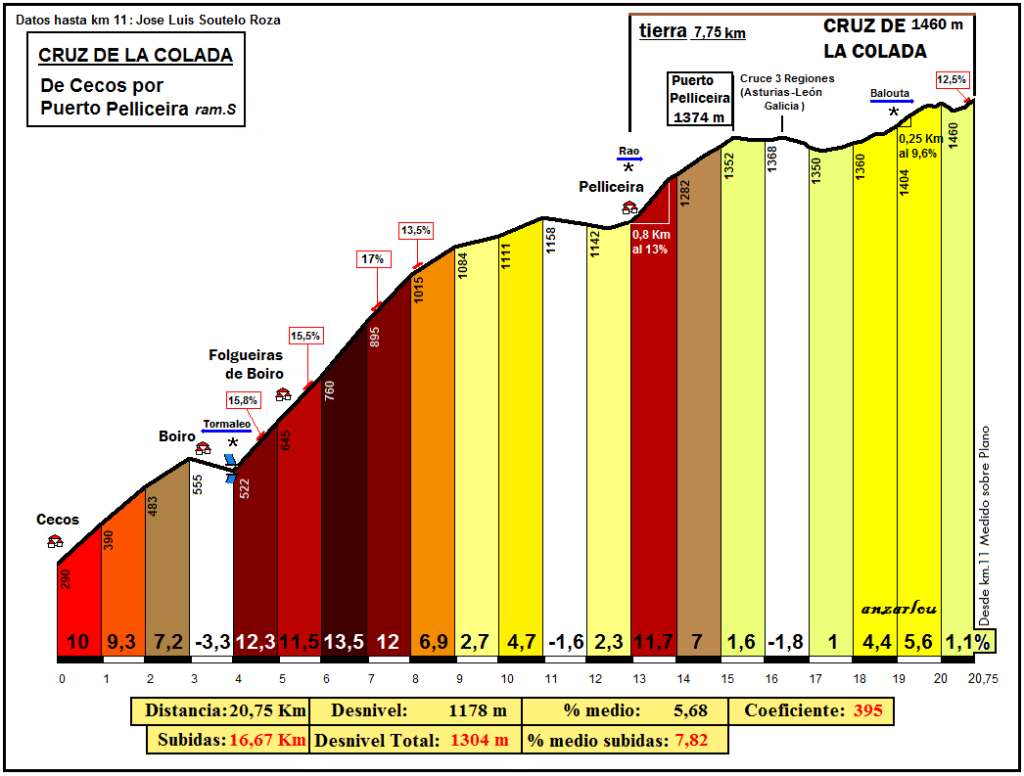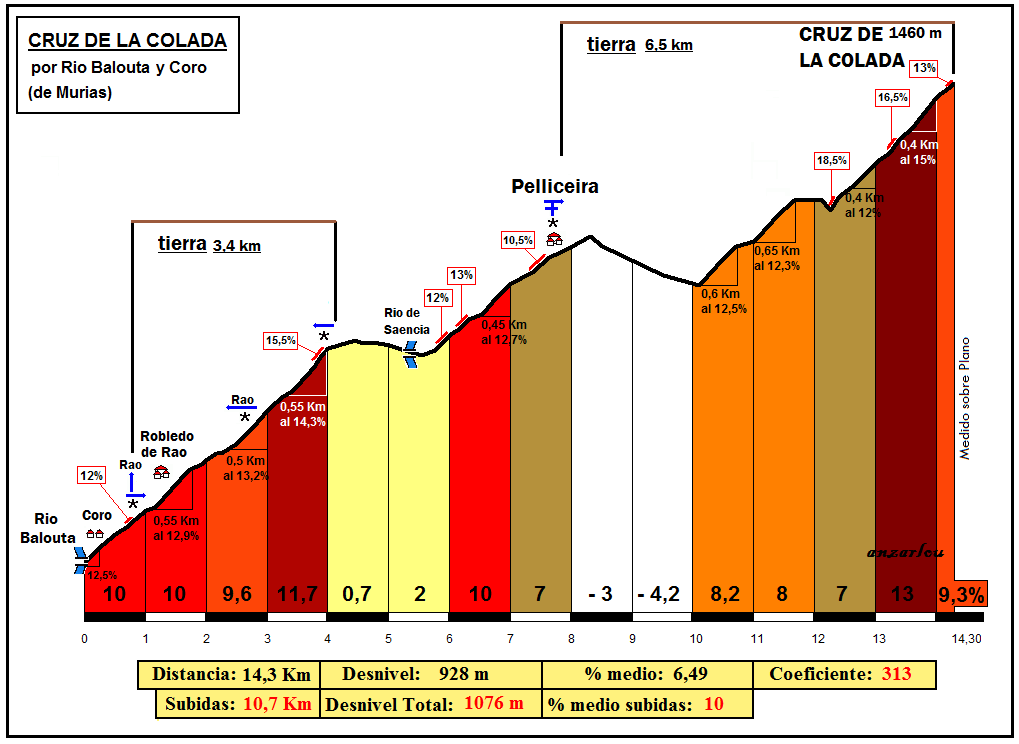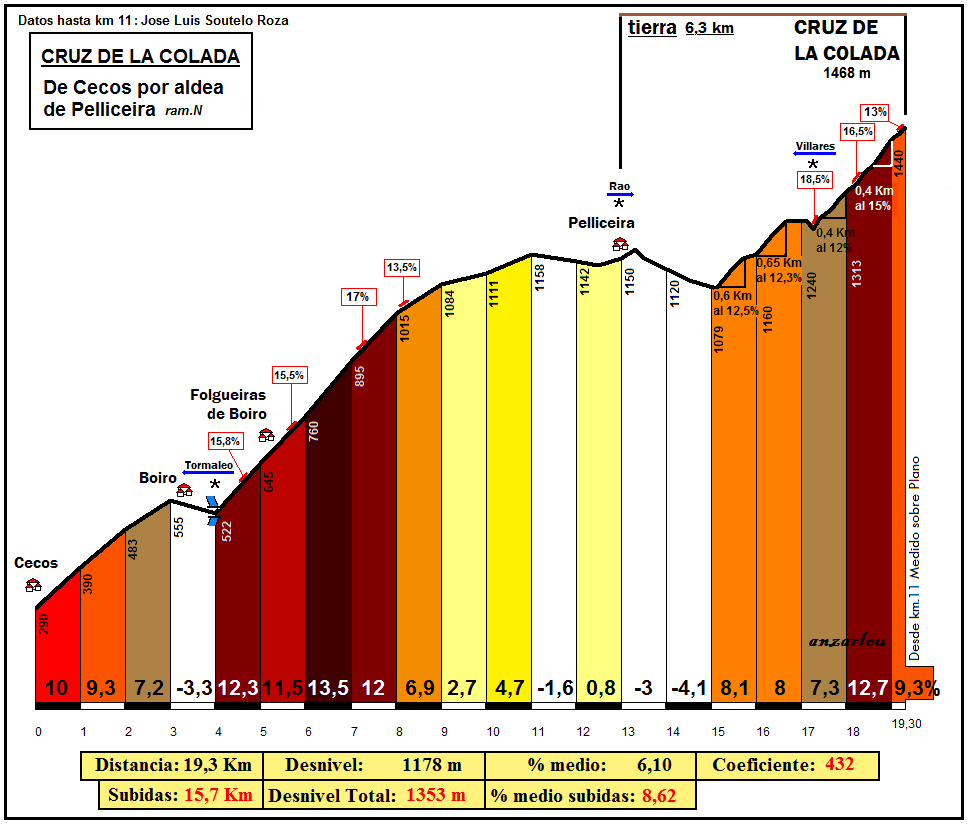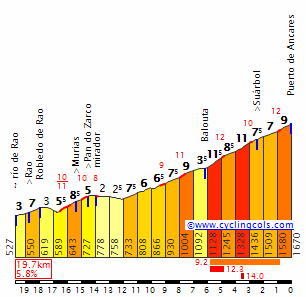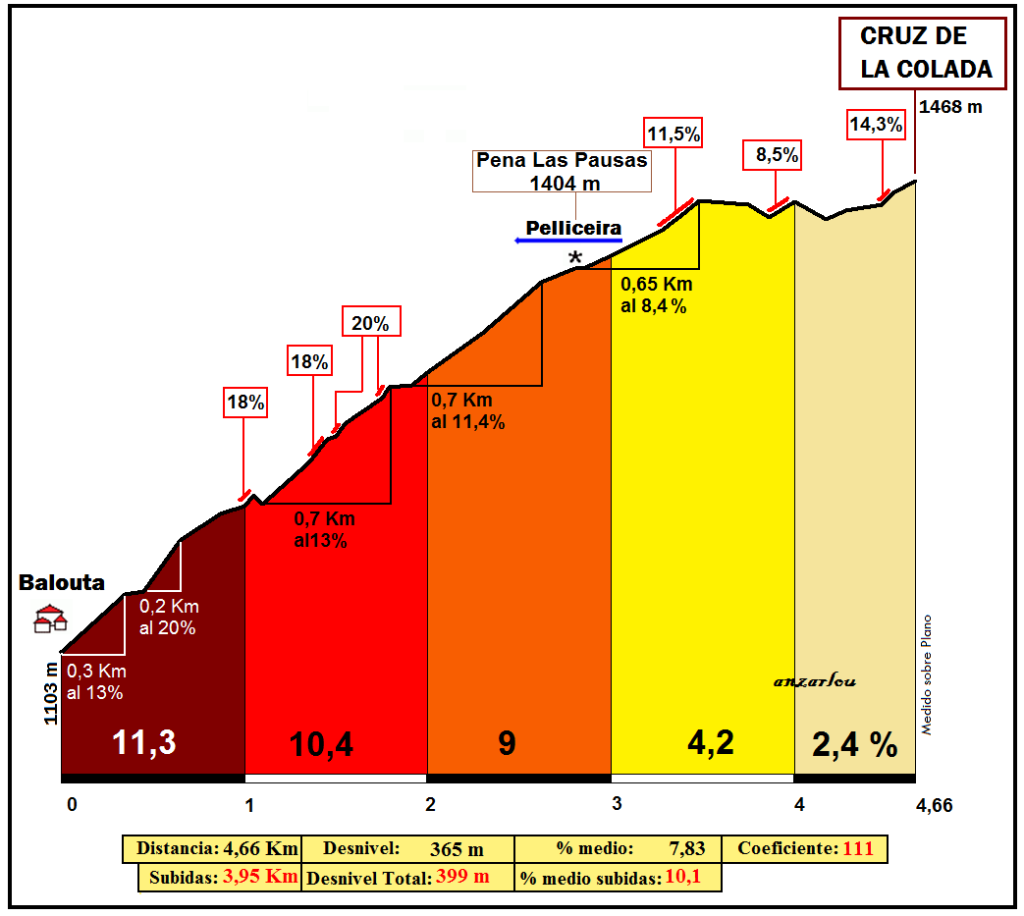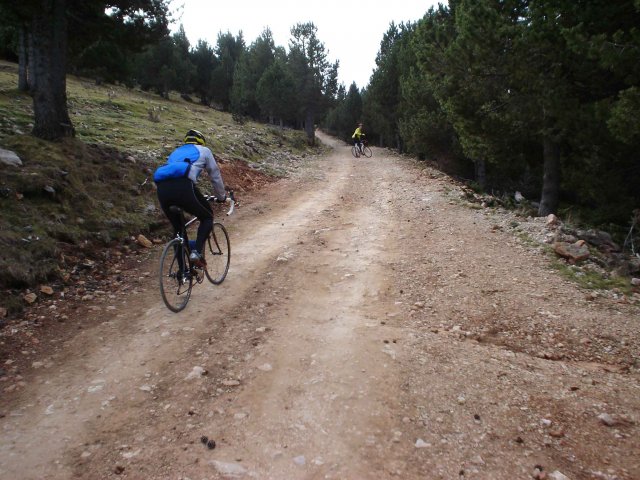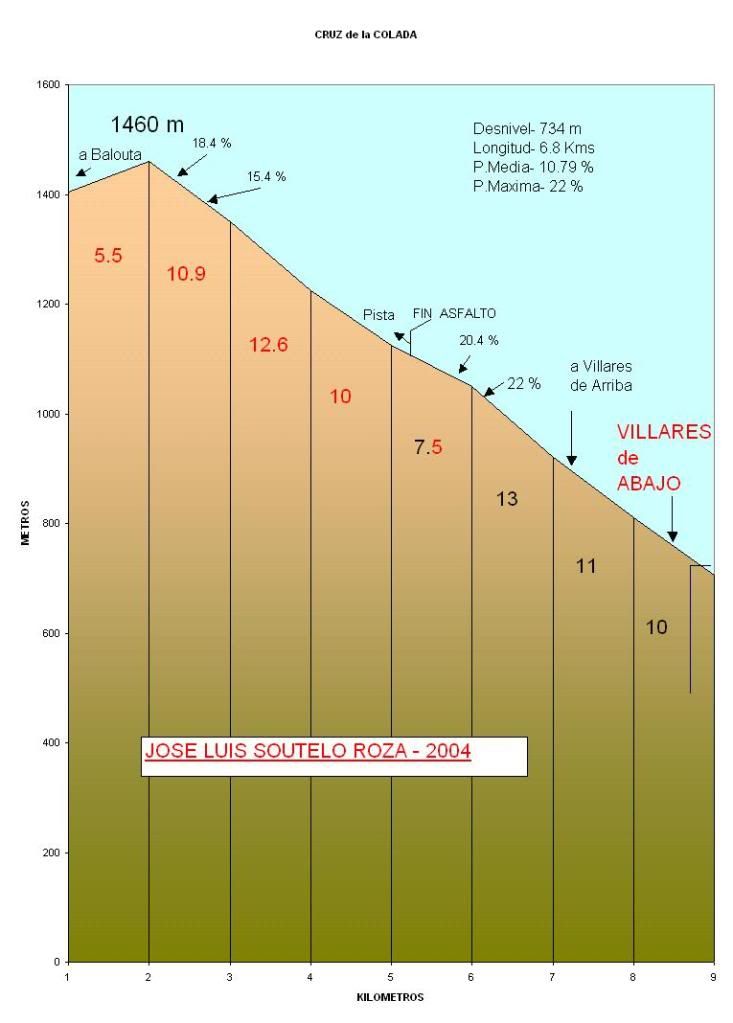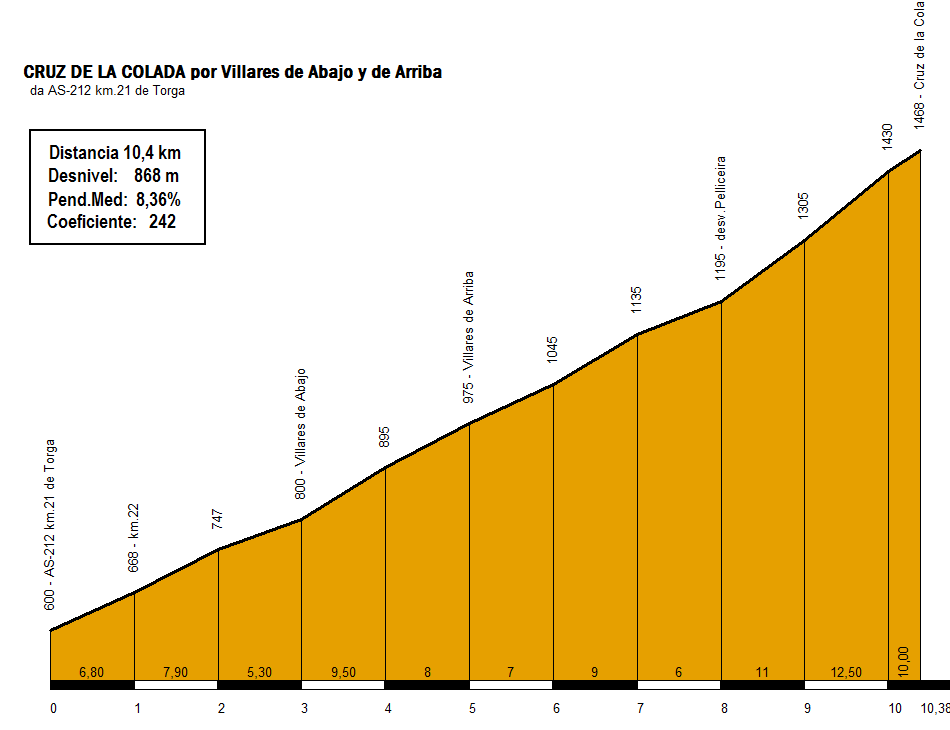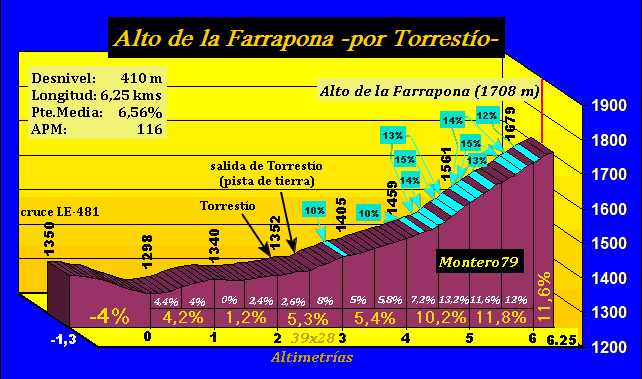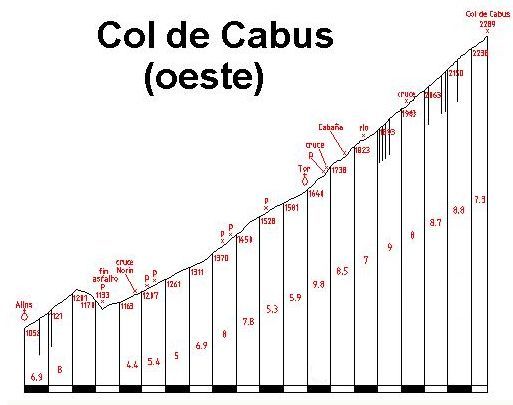- Apr 15, 2016
- 4,229
- 659
- 17,680
There are many climbs like Basset, Sahun, Tenda; the climbs which many cycling fans want to see them being fetured in the race as a pass but since there are some gravel parts in the climbs they can't be used as a pass (or only used from 1-way)
But these 3 are not the only ones. For example, have you ever heard of Passo Pelliceira?
Passo Pelliceira is a climb in between Asturias and Galicia (around the border).
There are 2 sides of this climb, one from Cecos and one from Coro-Rio Baluta which share the last 2,6 km. (which is on gravel) But that is not to say Passo Pelliceira is a dead end road, since there is a road of 5,5 km from Passo Pelliceira to Cruz de Colada that is on gravel road.
Passo Pelliceira por Coro-Rio Balouta. the overall stats for this climb is 10,3 km at %8,1 with a km of not steep descent. Also there is a 3,4 km of gravel road between km 0,5 and 4,5 so it rules out this side being used as a descend unless they asphalt the gravel part. The first 4 km of this climb averages %10,3 before a mixture of climbing and descending for 2 kms. Then, the next 4 km are at %9,3 before the last 300m at %7,3 as the last 2,6 km of this side (after the Pelliceira village) are the same as the Cecos side. The maximum gradient of this side of the climb is %15,5, at the 4th km.
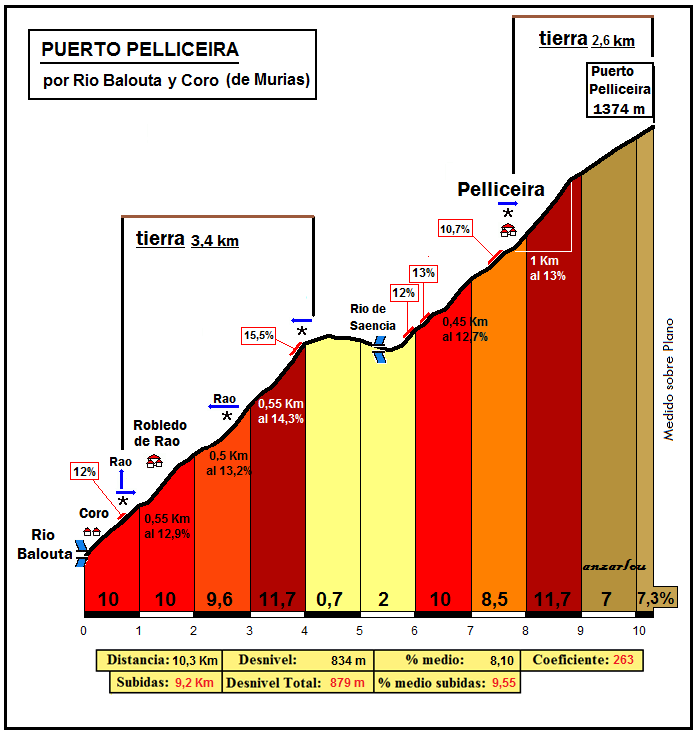
Passo Pelliceira por Cecos. The overall stats for this climb is 15,3 km at %7,1 but there is a descent part between km 3 and 4 (which averages %3,3) and there is a false flat descent and false flat ascent part between kms 11 and 13. The kms between 9 and 11 are also pretty easy at %3,7 so actually the stats don't tell the whole story. The first 3 km are %8,8. After the descent the next 4 kms average %12,3. The next km is at %6,9 before 2 kms at %3,7. Then, after the false flat descent-false flat ascent part of 1,7 kms we reach the village of Pelliceira and share the last 2,6 km with the Coro-Rio Balouta side which is on gravel. I don't know the gradients of the first 300 m. Then a km at %11,7, a km at %7 before the last 300m at %7,3. The maximum gradient of this side is %17.
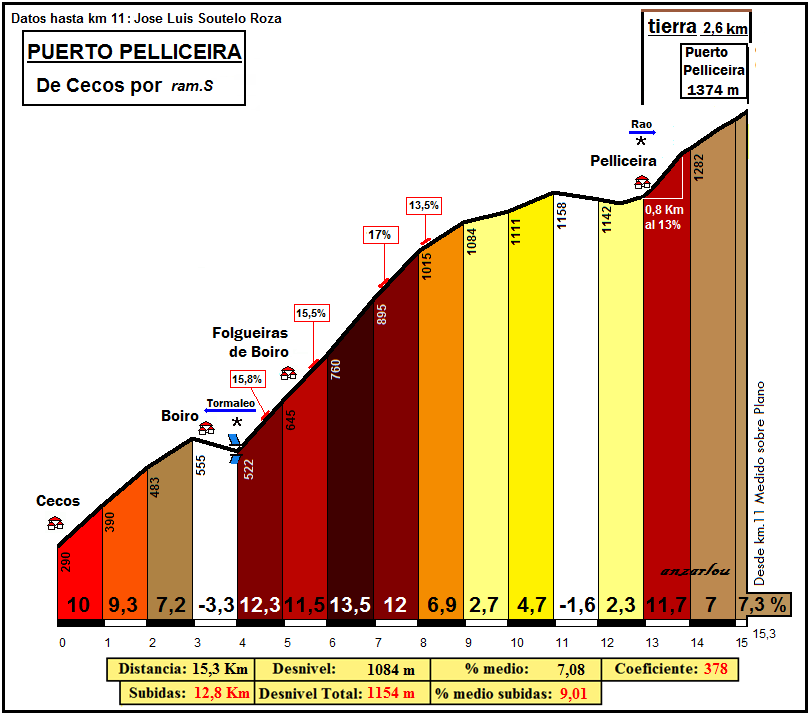
But these 3 are not the only ones. For example, have you ever heard of Passo Pelliceira?
Passo Pelliceira is a climb in between Asturias and Galicia (around the border).
There are 2 sides of this climb, one from Cecos and one from Coro-Rio Baluta which share the last 2,6 km. (which is on gravel) But that is not to say Passo Pelliceira is a dead end road, since there is a road of 5,5 km from Passo Pelliceira to Cruz de Colada that is on gravel road.
Passo Pelliceira por Coro-Rio Balouta. the overall stats for this climb is 10,3 km at %8,1 with a km of not steep descent. Also there is a 3,4 km of gravel road between km 0,5 and 4,5 so it rules out this side being used as a descend unless they asphalt the gravel part. The first 4 km of this climb averages %10,3 before a mixture of climbing and descending for 2 kms. Then, the next 4 km are at %9,3 before the last 300m at %7,3 as the last 2,6 km of this side (after the Pelliceira village) are the same as the Cecos side. The maximum gradient of this side of the climb is %15,5, at the 4th km.

Passo Pelliceira por Cecos. The overall stats for this climb is 15,3 km at %7,1 but there is a descent part between km 3 and 4 (which averages %3,3) and there is a false flat descent and false flat ascent part between kms 11 and 13. The kms between 9 and 11 are also pretty easy at %3,7 so actually the stats don't tell the whole story. The first 3 km are %8,8. After the descent the next 4 kms average %12,3. The next km is at %6,9 before 2 kms at %3,7. Then, after the false flat descent-false flat ascent part of 1,7 kms we reach the village of Pelliceira and share the last 2,6 km with the Coro-Rio Balouta side which is on gravel. I don't know the gradients of the first 300 m. Then a km at %11,7, a km at %7 before the last 300m at %7,3. The maximum gradient of this side is %17.



